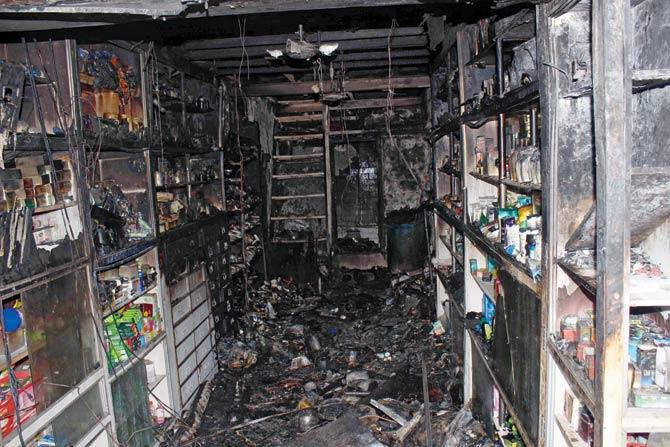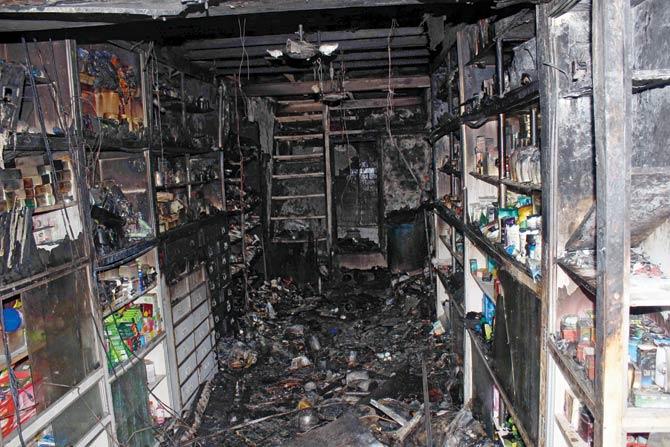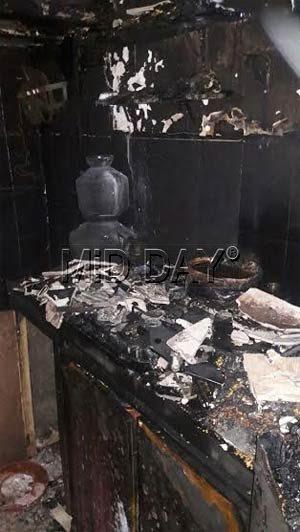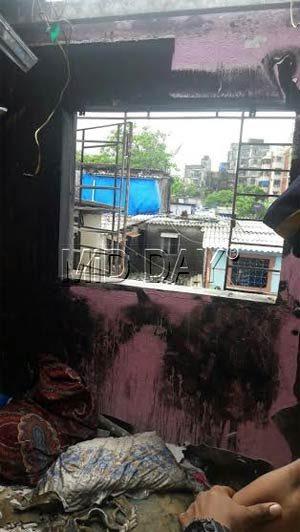Forensic experts said deadly fumes generated by the burning of medicines, wrappers and plastics caused the deaths

The nine people of a family who died in the fire at a building housing a drug store and a residence at Juhu Galli in Andheri (West) were killed in their sleep as they inhaled toxic fumes, forensic surgeons have told mid-day.
ADVERTISEMENT

Experts say the medicines in the store and the wrapping material could have caused the release of toxic fumes. Pic/Prabhanjan Dhanu
Those killed have varying degrees of burns ranging from 25 per cent to 85 per cent, the doctors have said they all died due to hydrogen cyanide and carbon monoxide poisoning. But for the chemicals, some of those who had suffered minor burns may have survived, they said.

“They could not even cry for help or run for safety and died spontaneously in their deep sleep,” said a doctor from the team of surgeons who conducted the post-mortem on all nine bodies.

This is a departure from the usual practice in mass casualties, where the collector or the tehsildhar authorises the post-mortem of just one body, with the same cause of death attributed to all the deceased.
“We saw the crime scene photos and have prima-facie ruled out sabotage,” said the surgeon. “As all nine deceased were in deep sleep, they inhaled the toxic fumes leading to suffocation and unconsciousness before sustaining burn injuries. There was black soot on the trachea, which indicates the inhalation of toxic fumes. We have given the provisional cause of death as shock and suffocation due to hypovolemic thermal burns,” said the forensic surgeon.
Rukmini Krishnamurthy, former director of the state FSL, said the medicines in the store and the wrapping material could have caused the release of toxic fumes.
“Medicines and drugs are themselves made of various chemical components,” said Krishnamurthy. “The packing is done with polyacrylic materials like foils, containers and bottles. So in this case, apart from carbon dioxide and carbon monoxide, which are commonly released in any fire, gases like sulphur dioxide, hydrogen cyanide, methane, etc would have been released depending on the type of polymer that was burning.”
Dr Shailesh Mohite, professor and head of the department of forensic medicine and toxicology at Nair Medical college, said the odorless carbon monoxide, if inhaled, causes muscular weakness and confusion, followed by unconsciousness.
“Thus sleeping victims are rendered unconscious even before they can wake up or realise what is happening, resulting in spontaneous death,” said Mohite.
Former fire chief PD Khargupikar said the burning of poly-acrylic plastic results in the generation of lethal acrelo-nitrite, besides generating hydrogen cyanide.
“Death is immediate when such fires happen and the gases are released in a confined area.”
Vinayak Sarode, a techno-commercial pharmaceutical expert from Pune, said companies use polyethylene containers to pack liquid medicines. He said while this does not release hydrogen cyanide gas, it releases acrylic fumes, which can cause spontaneous asphyxia.
“So if forensic experts are suspecting hydrogen cyanide fumes, then it might have come from electrical wire sheaths and other plastic material kept inside the shop,” said Sarode.
Dr Sunil Keswani, founder of the National Burns Centre at Airoli, said victims of fire accidents need to be treated for both burns and injuries to the internal respiratory tract.
“In cases where it is difficult to ascertain the exact nature of poisonous gases inhaled, it is very important to immediately put patients on ventilator support. Any delay will be fatal,” said Keswani.
Forensic experts at the Cooper Medical College have preserved blood samples — for gas analysis — and skin — to rule out the presence of inflammable material on the bodies. The samples will be sent to the chemistry department of the state forensic science laboratory.
 Subscribe today by clicking the link and stay updated with the latest news!" Click here!
Subscribe today by clicking the link and stay updated with the latest news!" Click here!






